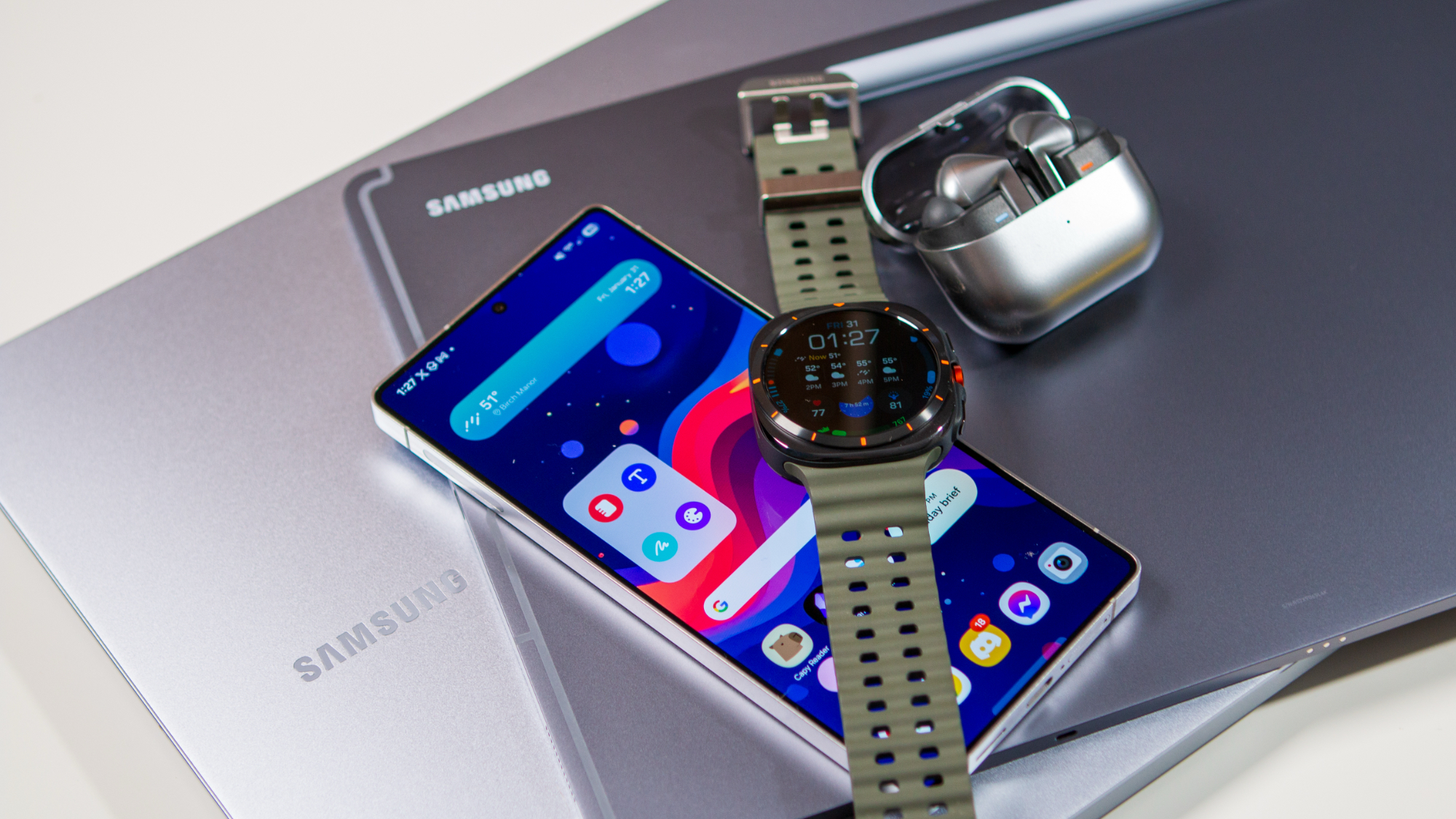Meta Quest 3S: Specs, games, software, and everything you need to know
The Meta Quest 3S strikes a balance between the Quest 3's power and the Quest 2's design at a cheaper price.

The Meta Quest 3S combines the best features of Meta's VR headsets in a new headset we love. It packs the powerful processor and mixed reality features of the more expensive Meta Quest 3 into a headset that's the same price as 2020's Meta Quest 2, an impressive feat no matter how you look at it.
For $200 less than the Meta Quest 3, you're getting the same amazing exclusives and cutting-edge visuals in games like Batman Arkham Shadow. You can also play full-color mixed reality games, a huge upgrade on the Quest 2's low-resolution, black-and-white-only passthrough vision. It even features a new IR flood sensor that enhances hand tracking accuracy and allows you to play on the headset in the dark.
We gave the headset 4.5 out of 5 stars, praising it for bringing next-generation power at an affordable price, even if that means you miss out on the clearer lenses and slimmer design of the more expensive Quest 3. Below, we'll focus on everything else you need to know about the Meta Quest 3S, from price and availability to specs and comparisons to other Meta headsets.
Meta Quest 3S: Price and availability

- Meta Quest 3S 128GB: $299 / CA$399 / £289 / €329 / ¥48,400
- Meta Quest 3S 256GB: $399 / CA$549 / £379 / €439 / ¥64,900
The Meta Quest 3S launched on October 15, 2024, in 23 countries; that link will tell you if it's available in yours.
Every Meta Quest 3S comes with three free months of a Meta Quest+ subscription. That subscription includes a game catalog of 20 games and two curated titles per month as long as you're subscribed. While 128GB is plenty of storage for most people, those who enjoy playing multiple games may find the 256GB model more worthwhile.
It's available in the United States at Amazon, Best Buy, Target, Walmart, and a host of other retailers like GameStop. For American customers only, Meta offers a "Pay Now, Play Later" program through its own site that charges you monthly for 24 months for the Quest 3S 128GB ($19.99/month) or Quest 3S 256GB (24.99/month). It includes a 24-month Quest+ subscription and Meta Warranty Plus.
Meta Quest 3S spring accessory sale
- Yoges 10,000mAh battery comfort headstrap:
$59.99$39.99 at Amazon - PrismXR Vega T1 made for VR earbuds:
$69.99$44.99 at Amazon - Kiwi Design facial interface and pad:
$34.99$28 at Amazon - AMVR controller grips:
$21.99$16.79 at Amazon - Woojer Haptic Vest 3:
$499$349 at Best Buy
Meta Quest 3S: Specs and design
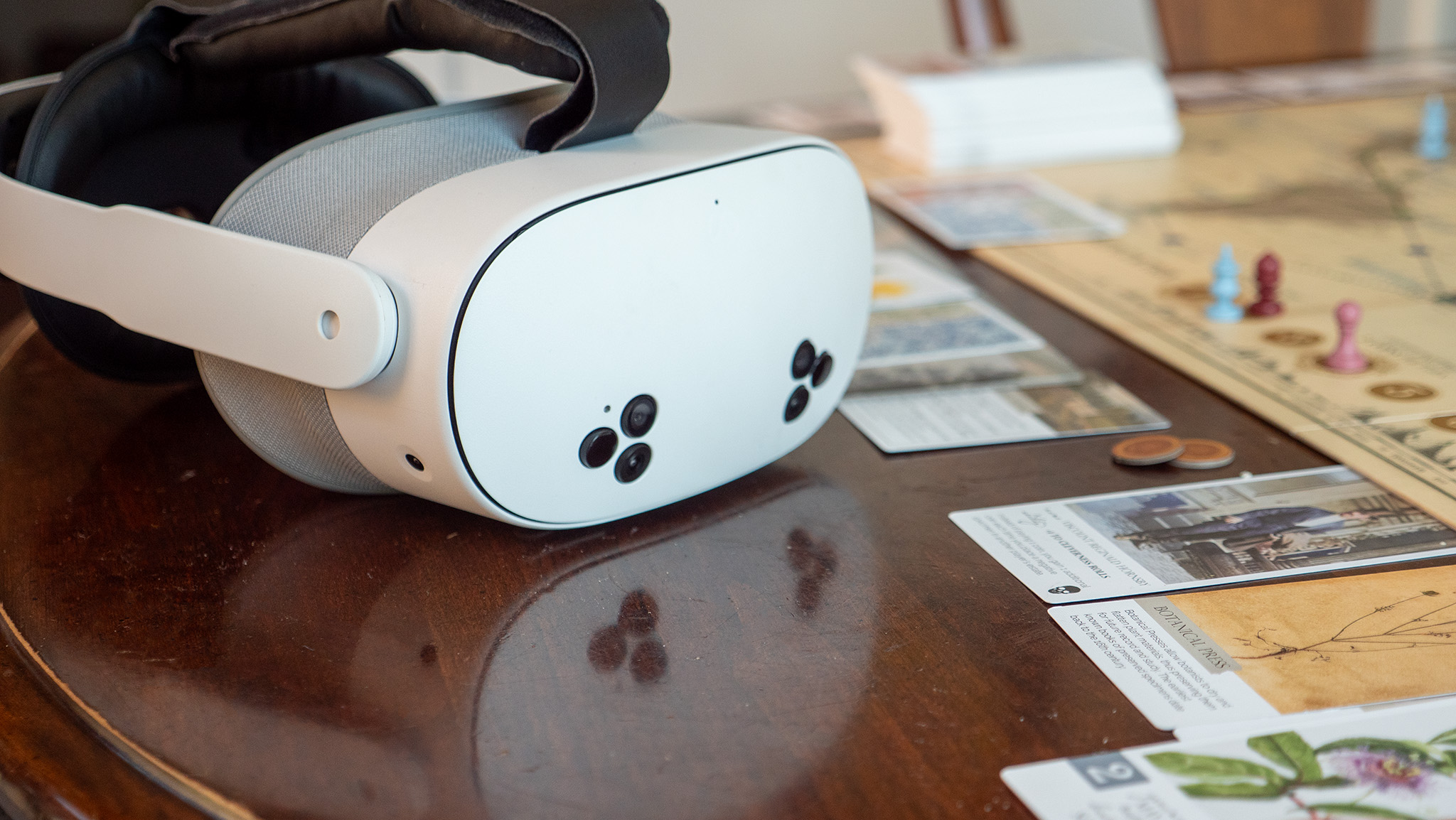
Category | Meta Quest 3S |
|---|---|
CPU | Snapdragon XR2 Gen 2 |
RAM | 8GB |
Storage | 128GB ($299); 256GB ($399) |
Display | 1,832 x 1,920 LCD; 773 PPI; 20 PPD |
FOV | 96º H; 90º V |
Lens | Fresnel |
Cameras | 2 4MP RGB cameras (18 PPD); 4 VGA sensors (inside-out tracking); 2 Flood LEDs |
Depth sensor | Software |
Slimness (excluding facial interface) | 73.9mm |
Weight | 514g |
Battery | 4,325mAh |
Controllers | Touch Plus |
We've got a detailed Meta Quest 3S vs. Quest 3 guide that compares in depth how the budget and high-end VR headsets compare. Essentially, both headsets share the same Snapdragon chipset, memory, 4MP color passthrough camera, weight, and Touch Plus controllers. The Quest 3 has superior lenses and higher resolution, but a shorter battery life.
Get the latest news from Android Central, your trusted companion in the world of Android
We also have a Quest 3S vs. Quest 2 guide if you want an in-depth comparison to Meta's last-generation headset. To summarize, the latest budget headset has a new Snapdragon chip with double the GPU power, 33% extra RAM, and full-color passthrough with 18 pixels per degree (PPD) instead of 4 PPD black-and-white passthrough on the Quest 2. It's about 10g heavier but also 20% slimmer than the Quest 2, making it slightly less front-heavy.
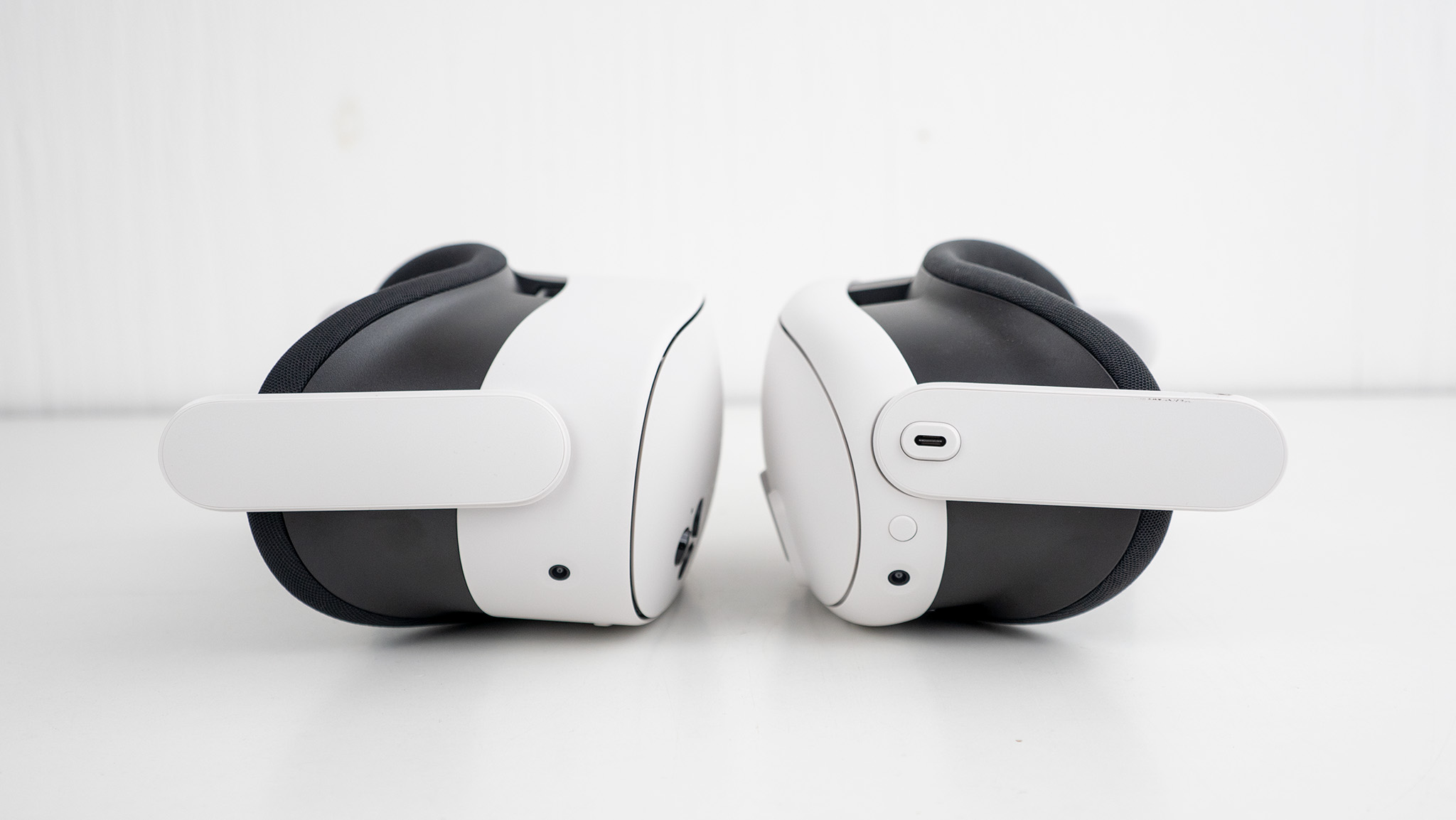
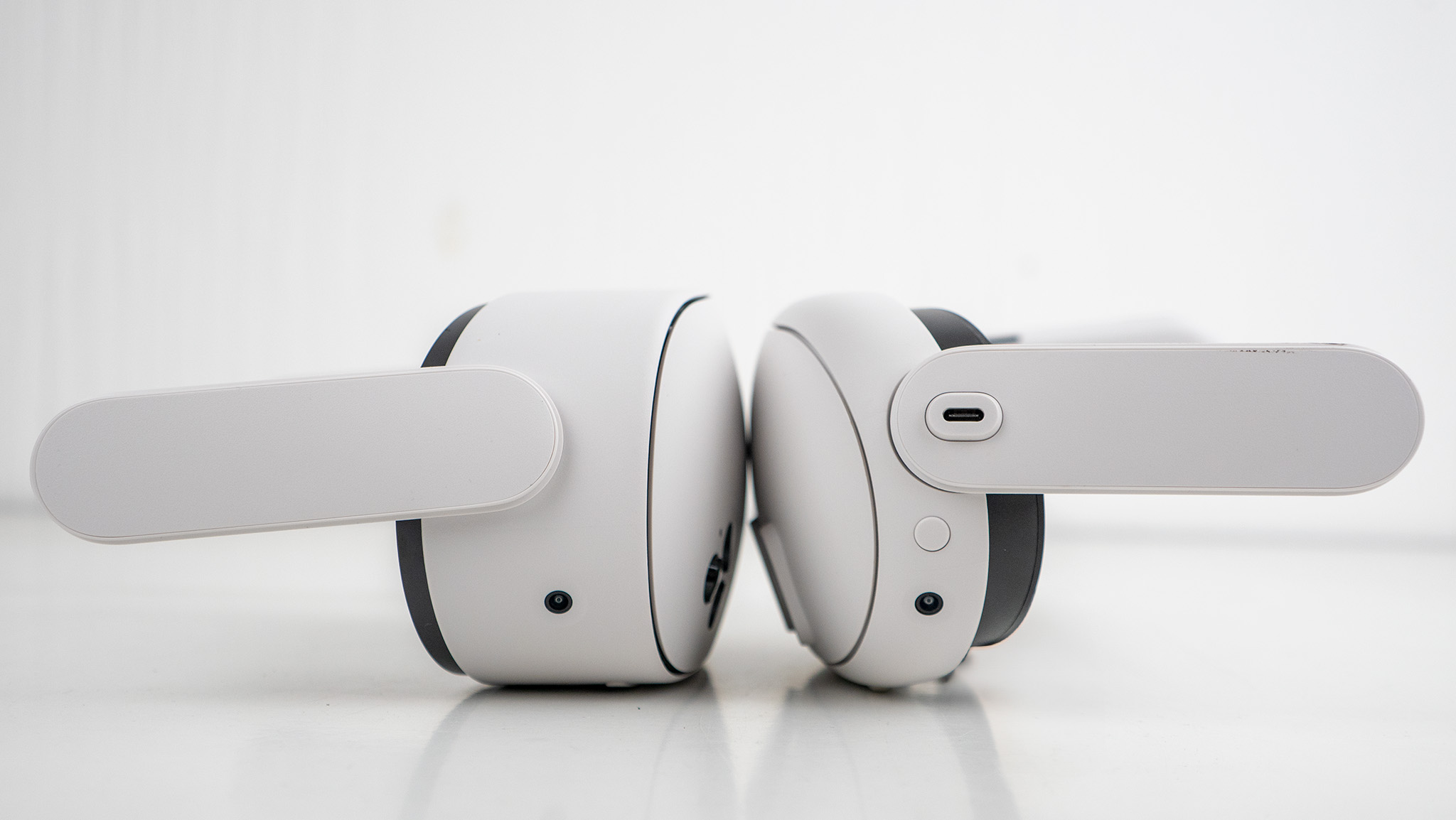
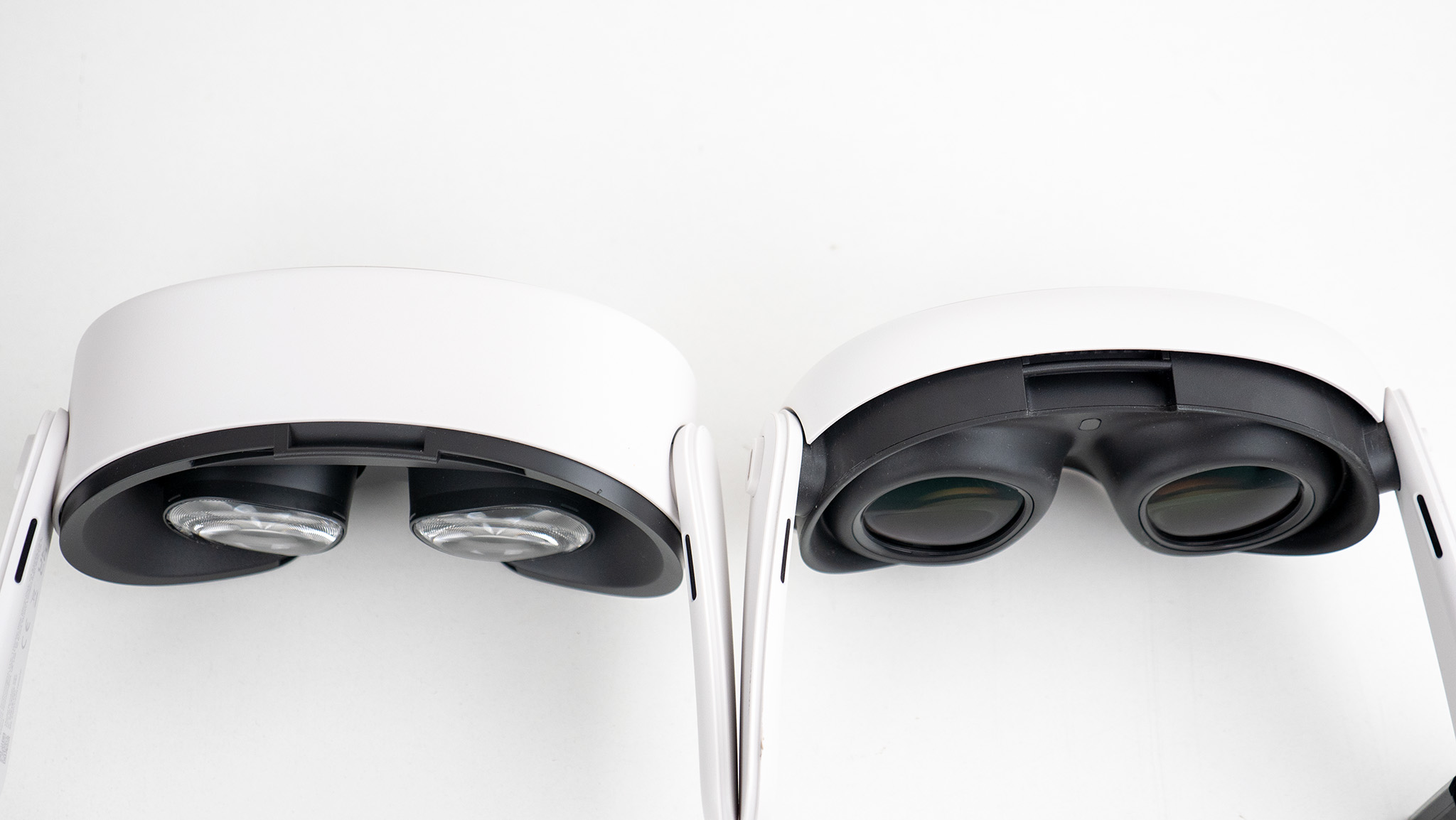


The Meta Quest 3S resolution and Fresnel lenses are virtually unchanged from the Oculus Quest 2; if you want a lens upgrade, you'll need to buy the Meta Quest 3, which has an extra 5 PPD and pancake lenses that remove the notorious "sweet spot" from Fresnel lenses.
Of the three headsets, the Meta Quest 3S has the best battery life, roughly 2.5 hours per charge. The Quest 3 has a larger battery, but its higher resolution and brighter lenses use more power. The Quest 2 matches the Quest 3S's resolution and has a smaller battery, but the Quest 3S doesn't have to work as hard to create that resolution since it has a more powerful processor, resulting in better battery life.
The Quest 3S's flood LEDs allow you to play in a completely dark room so long as it can see the walls or furniture around you.
As for what else has changed, the Meta Quest 3S no longer has a 3.5mm headphone jack for private audio, only the USB-C charging port if you want to use wireless earbuds with a USB-C dongle.
Plus, the Quest 3S now has two "flood LEDs for illumination and more reliable hand interactions across environments and lighting conditions." This means it's possible to play games in a completely dark room so long as the room isn't too large. If the cameras can still see walls and furniture via the infrared LEDs, you won't need normal lights on in the room.
Meta Quest 3S: Accessories

Curious which Quest 2 & 3 accessories work with the Quest 3S? Our guide runs through things in detail, but most of the Quest 3 head straps, Link cables, and controller accessories will work on a Meta Quest 3S, but not any facial interfaces or lens inserts. Quest 2 owners can transfer over their prescription inserts, but not much else, aside from carrying cases.
If you're upgrading from the Quest 2, you'll end up spending a lot of money if you go with the official Meta accessories. Our guide on the best Quest 3 and 3S accessories includes our favorites that'll work for both headsets and cost you significantly less.
If I had to recommend one accessory to pick up right away, it would be the YOGES Battery Head Strap. This one uses an Elite-style headstrap design for improved comfort over the original cloth strap, plus a 10,000mAh magnetically removable, rechargeable battery pack that adds hours of playtime to your headset.
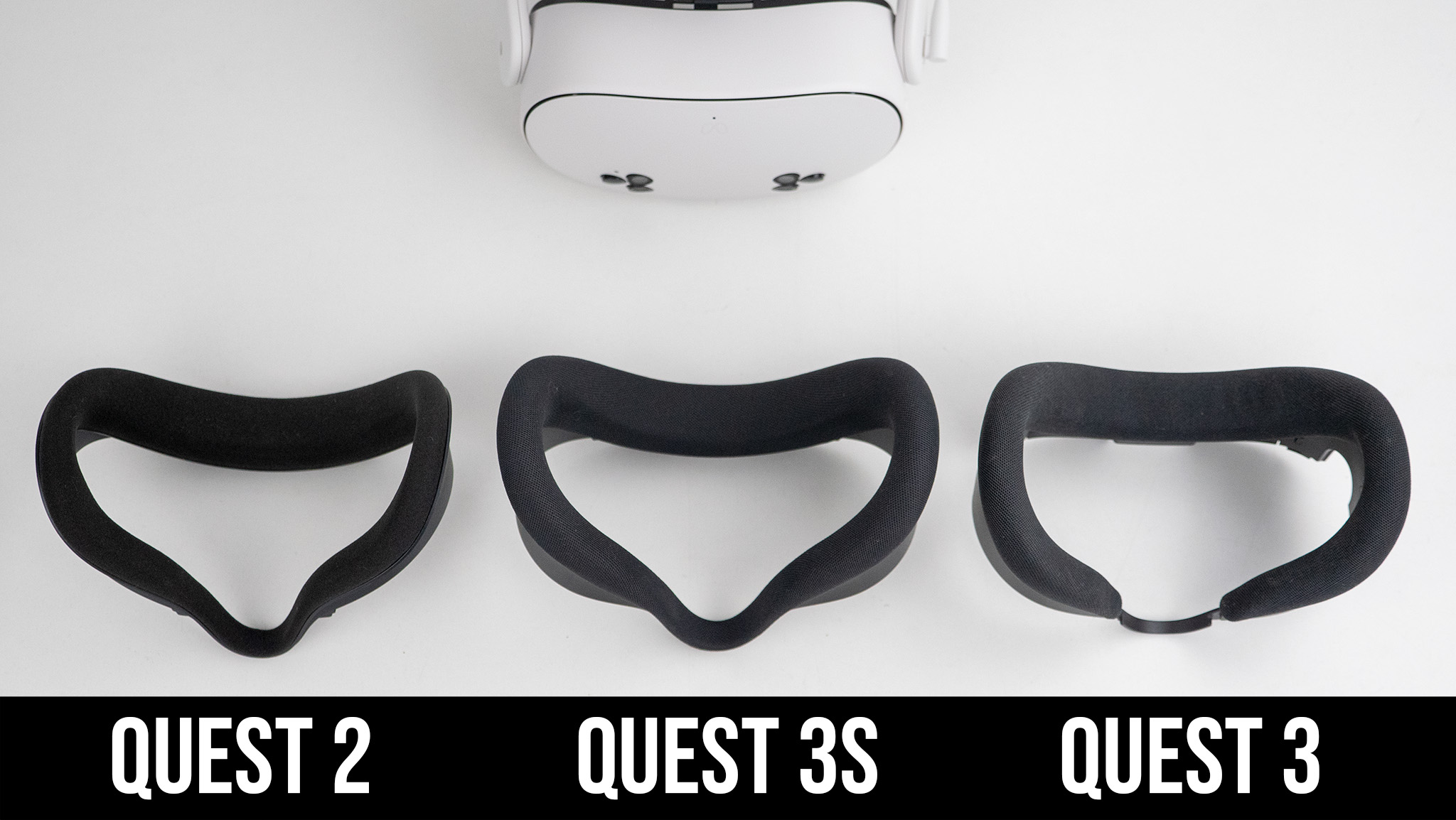
The Meta Quest 3S ships with a cloth face pad that's designed to provide comfort to one person with relatively light use. The cloth material and pad are soft and feel good for most kinds of VR games, but more active gamers should consider switching it out for pleather or TPU material that wicks away sweat instead of absorbing it.
We recommend picking up this Kiwi Design face pad as it's not only made of a material that's a lot easier to clean and swap out — so you can share your VR headset without sharing the ick of sweat — but the pad's contours are also less angular. One of the biggest problems with the default Quest 3S face pad is that it has deep contours which doesn't fit every face as nicely.
Lastly, adding grips to your Quest 3S controllers can make them substantially more comfortable. I've recommended these simple AMVR controller grips since the original Meta Quest 3 release, and they're still my favorite to date for the Meta Quest 3S. You just pop the existing controller battery door off, put the new grip door on, and you're done. No awkward silicone case to remove.
Meta Quest 3S: Games and exclusives

Thanks to the Snapdragon XR2 Gen 2 chip, the Meta Quest 3S will support the same exclusive games and enhancements as the Quest 3.
Games like Batman: Arkham Shadow and Alien: Rogue Incursion are exclusive to the Meta Quest 3 and Meta Quest 3S, owing to the extra processing power these headsets provide over the Quest 2. Plenty of upcoming Quest games are also Quest 3-exclusive, although many developers are still targeting Quest 2 compatibility to ensure that most people can play their games.
Nearly all mixed-reality games, like Laser Dance, are Quest 3 exclusives as well. Some MR games can technically work on the Quest 2, but the low-res, black-and-white passthrough is so uncomfortable that they're generally not worth trying to play on that older system.
Otherwise, you'll find many Quest 2 games with Quest 3S enhancements like higher refresh rates, improved textures, better lighting, and other improvements. The Quest 2's lightweight CPU hampered the developers, but the Quest 3S unleashes them to add missing details and extra objects, like larger zombie hordes in Walking Dead: Saints & Sinners.
Not every game has a Quest 3 patch, but enough do to make this a real incentive. Otherwise, many VR games have a mixed-reality passthrough mode that only works on the Quest 3 and 3S. This mode overlays virtual objects over your real room so you can see what you're doing while playing. Games like Racket Club are an excellent example of how mixed reality can let you play better without worrying about smashing into a wall or your TV since you can see your room while you play.
Meta recently upgraded the mixed reality capabilities of the Meta Quest 3S and Quest 3, giving apps and games the ability to use the headset's cameras to make mixed reality content more believable. It also allows developers to more accurately place virtual objects in the real world or even change things in your space to better meld the virtual and physical worlds.
Meta Quest 3S: Software and updates

Every month, Meta releases a new update to its Meta Horizon OS, the operating system that powers the Meta Quest experience. While 2024 was full of great updates with tons of new features added every month, Meta's headsets had a rough few months from December 2024 to April 2025.
Right around Christmas, Meta released a faulty update that bricked many headsets and caused owners to have to get warranty replacements. Meta's V74 update, which debuted in February, introduced a host of bugs that include problems with tracking, disappearing UI elements, and additional issues with secondary accounts on headsets. Thankfully, the third V76 update in late April has solved most of these problems.
Now that we've finally got past these terrible bugs, users can enjoy awesome new features like an immersive Instagram feed with 3D content, apps that can now use your headset's camera feed to transform the room you're standing in, and some test users are even seeing a new Navigator UI appear in May's V77 update.

App-level camera access is the most revolutionary new feature added to the Quest in a long time. It means your apps and games will now be able to see the camera feed if you permit them, opening up a host of new mixed-reality features with more accurate scene understanding using the power of AI.
In one example, games developed with this new feature could feature zombies banging on your actual windows rather than a virtual window. Another example showed a virtual fishing pond in the middle of a living room with accurate reflections of what's in the physical room, not just a virtual representation.
Lastly, virtual pets like Hello Dot should soon be getting an upgrade to better understand where they live, using generative AI to perform context-sensitive actions like digging in the dirt if you take them outside. It's all very exciting and represents a huge step toward merging actual reality with virtual reality.
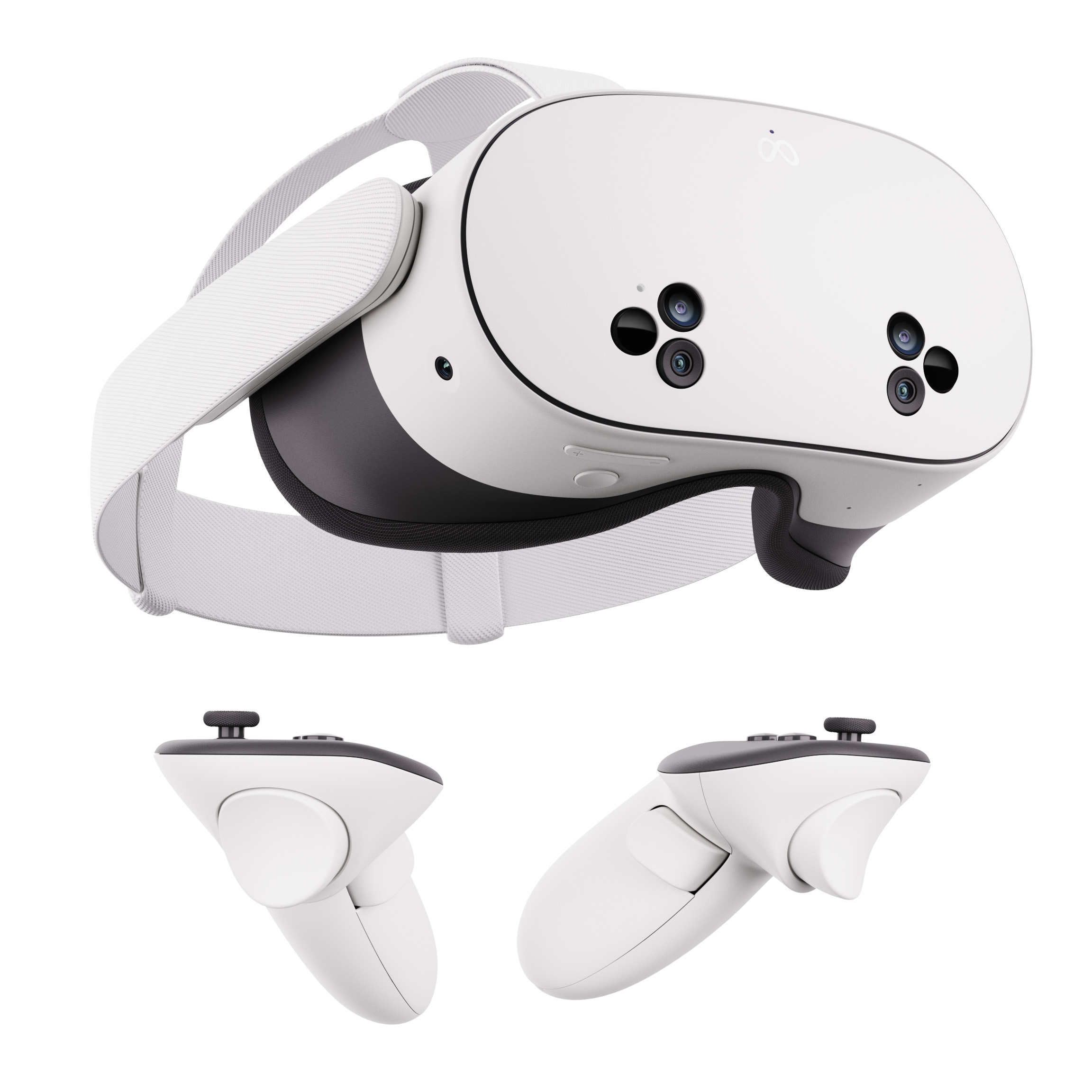
Affordable upgrade
Choose the Meta Quest 3S if you want the power, game library, and mixed-reality passthrough of the Quest 3 for a lower price. Don't choose it if you dislike the Quest 2's visual experience and want something truly next-gen.

You must confirm your public display name before commenting
Please logout and then login again, you will then be prompted to enter your display name.

